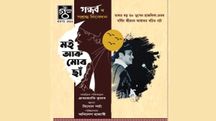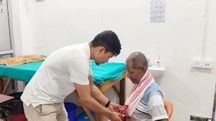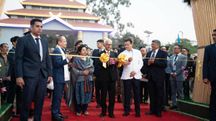COVID warrior worship and flower shower not enough to protect Healthcare Workers
Violence against healthcare professionals has been another burden faced and experienced during the pandemic
 COVID warrior worship and flower shower not enough to protect Healthcare Workers
COVID warrior worship and flower shower not enough to protect Healthcare WorkersShilpi Sikha Das
The global burden of the pandemic is shouldered by the healthcare professionals in every corner of the world. Continuous stress, anxiety, prolonged hours of service with any rest, no leave, are a few extreme conditions that have become everyday life of healthcare workers which leaves no option of even taking sick leave (until moderate or severe).
Violence against healthcare professionals has been another burden faced and experienced during the pandemic. World Report on Violence and Health defines violence as "an intentional use of physical force or power, threatened or actual, against oneself, another person, or against a group or community, which either results in or has a high likelihood of resulting in injury, death, psychological harm, mal-development or deprivation".
Also Read: Ninong Ering demands NE’s inclusion in textbooks from Centre
Violence against healthcare professionals is a form of workplace violence and also violence against a professional which calls for serious legal actions, yet there has been a rise in recorded cases. It is interesting to note that violence against healthcare professionals is mostly a collective form of violence where a group of people attacks one or a smaller number of people compared to the group.
Collective violence is an organized form of violence that is directed to a target. Before the pandemic, a study conducted by IMA finds 75% of doctors faced violence at the workplace that ranges from verbal abuse to aggressive behavior. A recent study reviewed various reports on violence against doctors across India, it also cited a survey report of IMA that says 82.7% of doctors are stressed out due to their profession. 62.85 of the doctors are unable to visit their patients without any fear of violence. While 46.3% reported fear of violence as the main cause of everyday stress.
With an existing figure of reported cases, we can only imagine the gravity of raising cases that are daily reported in news channels, newspapers, or circulated through social media. The horrific image of a junior doctor brutally attacked by a mob in Assam two days back is still fresh to us, but the cases of attack on healthcare workers in Palghar, Karnataka, Delhi, etc., along with the case of mob attack on Dr Simon Hercules’s cremation who died in service during the pandemic are slowing sinking in public memory.
Many cases go unreported while many go without highlight. Violence outside the healthcare institutes; where healthcare workers were beaten up, spat upon while collecting swabs for COVID testing are cases that got less attention. The narratives and pictures of healthcare workers forced to leave their rented homes, fainting with exhausting, pregnant female doctors losing their lives, racial discriminations, etc. are lived experiences of healthcare workers during the pandemic. The reported cases of death of healthcare workers during COVID 19 are yet to be confirmed, but an estimated number of death of 747 doctors is shared by IMA in (which excludes the number of other frontline workers) in the first wave of the pandemic in India.
The pandemic has been highlighting on the loopholes of the Indian Healthcare system, that needs intervention from the Central and State Government. There is one doctor for every 1456 people in the country which is far less than the WHO recommendation of 1 doctor for every 1000 people. Lack of human resources, lack of infrastructure are some of the major concerns that have affected service delivery during the pandemic.
This can be clearly established by our healthcare budget percentage, India ranks 145th among 195 countries in healthcare access and quality. India records a catastrophic amount of Out-Of-Pocket (OOP) expenditure as only 15% of the population is covered by health insurance. Assam has been ranked among the three worst performing states in Sustainable Development Goals ranking by NITI Aayog.
The health indicators of Assam bear the burden of higher Maternal Mortality, Infant Mortality and anemia in the reproductive age group. The demand and supply of healthcare services where dissatisfaction of service, a poor mechanism for grievance redressal, poor emergency network in hospitals, lack of information dissemination and counseling are some of the major triggers for doctor-patient violence. Punishing the individual or the mob who induces and inflicted violence against healthcare workers is an immediate intervention that is a necessity. But the security of healthcare workers from future violence needs long-term immediate action.
It is also important to address violence against other frontline healthcare work along with the doctors as during the attack on the junior doctor, a nurse was also seriously injured but left out of media attention. It would be unjust to see and analyze violence alone but to work on the process and level that manifested violence. Attack on healthcare workers is not just an attack of the medical fraternity but the State's healthcare system. Thus, flower shower and celebrating COVID warrior is not enough to prevent and control violence against healthcare workers.
Copyright©2025 Living Media India Limited. For reprint rights: Syndications Today









